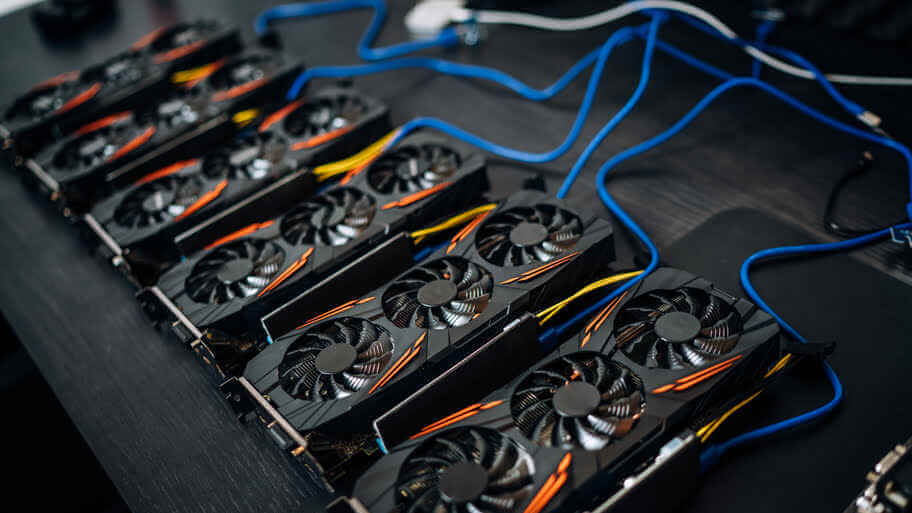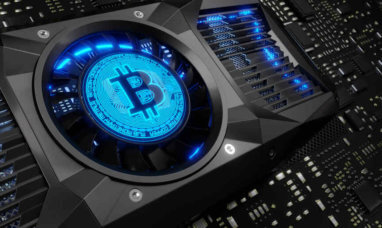Although mining bitcoin on a personal computer is no longer a realistic choice for making good income, there are still other cryptocurrencies that you can mine at home for profit, so long as you’re willing to put in the time and effort to learn about them. CPU mining was once viable in the early days of Bitcoin, but the network’s hash rate quickly rose to the point where it was no longer economical to mine on a CPU.
The value of Bitcoins decreased when the number of bitcoins created fell below the amount of electricity required to operate a CPU. CPU mining was removed from the Bitcoin core principles of earning, since it was deemed to be a waste of time. As a result, GPU mining became the sole option to mine Bitcoins for some time. The question, however, is whether CPU mining is profitable for other cryptos? Read on to find out more.
What is CPU Mining?
Cryptocurrency mining is the practice of utilizing computer hardware to power the computational activities of a blockchain network. Mining is required on all blockchains that employ Proof of Work (PoW), a consensus mechanism for securely processing, verifying, and confirming transactions whilst preventing double-spending and other blockchain hacks.
CPU mining entails either using conventional computers or configuring components to function only as mining devices. Many other cryptocurrencies, even popular ones, are likewise unable to be mined successfully with CPUs due to the high hash rate of the network. Some cryptocurrencies were developed with CPU mining in mind, such as Monero and Bytecoin, but they are exceptions.
Thus, it is possible to find for yourself a new viable cryptocurrency that can be effectively mined with a CPU and profit over the long run. Here are five cryptos you can still mine profitably from your PC:
Zcash (ZEC) – Block time: 1.15 minutes
Zcash is a cryptocurrency that focuses on privacy, and was first released in 2016. Privacy is a highly essential feature of Zcash for home miners, as it uses the Equihash algorithm, which is designed to be resistant to ASICs. Although this cryptocurrency is more challenging to mine due to its ASIC resistance, the difficulty is worth it: the coin’s (quite high) price is far more stable and dependable due to its inability to be mined using ASICs.
RavenCoin (RVN) – Block time: 1 minute
RavenCoin (RVN) is based on the KAWPOW algorithm. It is one of the easiest cryptocurrencies to mine with CPUs, which makes it an excellent choice for starters. Ravencoin’s proof-of-work (PoW) mechanism is distinct from Bitcoin and some other currencies, due to its ASIC-resistant feature. This capability is built into the RVN network’s KawPoW hashing algorithm. The new consensus mining method is a variant of the X16R algorithm that was implemented during the network’s May 2020 update.
KawPoW enables mining with far less processing power than Bitcoin, Ethereum, or Litecoin. RavenCoin is one of the most well-known initiatives that combines mining with a platform for tokenization. The primary benefit of RVN is its strong liquidity and presence on exchanges like Binance and Houbi. Mining Ravencoin with CPU is made possible with Ravencoin’s network hashrate of 12.57 TH/s, which makes it suitable for pool mining with CPU.
ByteCoin – Block time: 1 minute
Bytecoin is a private, decentralized, open-source cryptocurrency that is incredibly easy to mine. If you mine it in a pool, you can mine BCN using your CPU. Otherwise, we propose that you mine it using graphics cards. For novice miners, Bytecoin is the one of the finest cryptocurrencies to mine. Additionally, Bytecoin takes advantage of the lucrative CryptoNote algorithm.
In comparison to other cryptos, the CryptoNote algorithm can circumvent a slew of disadvantages. Bytecoin is built on the CryptoNote algorithm, which is the most potent CPU-based algorithm available. If you want to mine Bytecoin using a CPU, you can use xming.xmr or xmr-stak. Both choices provide access to the source code. As a result, you will be able to configure them using a Linux device if necessary. Depending on the mining hardware inputs, 11,560,736.55073305 Bytecoins can be mined every day at a hash rate of 6,000.00 H/s, a block reward of 8428.63329634 BCN, and difficulty of 377,952.00.
Electroneum (ETN) – Block time: 47 seconds
Electroneum was created to reach out to all mobile users worldwide, and the CryptoNote algorithm was employed to accomplish this goal. Furthermore, since the coin is still resistant to ASIC mining, mining can be done on smartphones, GPUs, and CPUs. Thus, Electroneum is unusual; although Electroneum has grown in popularity recently, it may still be profitable due to its ease of mining.
Monero (XMR) – Block time: 2 minutes
Monero is a 2014 privacy coin. This is another coin that is resistant to ASICs. One of Monero’s ideals is to preserve egalitarian mining, ensuring that everyone may mine. Monero does this by using a unique algorithm devised and developed by members of the Monero community: RandomX. This proof-of-work method is ASIC resistant, which implies that specialized gear for mining Monero is not viable. Miners must compete fairly and use consumer-grade gear.
Monero mining gets increasingly profitable as POW power grows, but, unlike Bitcoin, the connection is “just” linear. Monero is one of the most popular currencies to mine, and for a good reason: it has an infinite supply, which means that its mining complexity does not rise as much as Bitcoin’s, it has a high price, and it is rated in the top 30 coins by market capitalization. It has a bright long-term future. Monero is unquestionably one of the most rewarding cryptocurrencies to mine in general.
Monero Mining GPU vs. CPU
The mining algorithm upgrade to RandomX significantly improved the performance of CPU mining and, at the same time, decreased the hash rate of GPU cards (particularly AMD cards). Modern Intel CPUs can achieve 200 H/s while using just 45-60 W, so CPUs aren’t that bad. On the other hand, GPUs are less expensive, and a single rig may employ up to 4-6 GPUs, whereas a consumer-grade setup typically uses just one CPU.
GPU mining reduces the “additional” cost of the rig’s other components because it uses fewer resources. In addition, CPUs are faster than GPUs in hash rates. Using a PC that supports multiple or dual CPU motherboard mining will increase your hash rate and profitability.
Is CPU Mining Profitable?
Yes, CPU mining is still profitable, depending on the method used and the cryptocurrency being mined. It is, however, far less profitable than it was in 2014 or even 2017. Nowadays, mining is most lucrative when you join a mining pool or utilize cloud mining.
Pool, Solo, and Cloud Mining
Pool mining comprises miners who agree to split block rewards based on the amount of hash rate they have supplied. Mining in a pool increases your chances of discovering a block or otherwise mining bitcoin, or other coins, effectively by pooling your computing power. Solo mining is when a miner attempts to create new blocks on their own, with all of the block reward and transaction fee revenue going directly to the miner in exchange for their efforts. Finally, in cloud mining a cryptocurrency, such as Monero, is mined by renting cloud computing power rather than installing and running the necessary gear and software on a personal computer.
Is mining worth it in 2022?
It depends on the method of mining. Cryptocurrency mining through CPU is challenging to the mining industry’s dominance by large-scale operations. However, by selecting the most valuable cryptocurrencies and using the latest (and most effective) mining technology, such as dual CPU motherboard mining rigs, it is still possible to have profitable earnings from crypto mining in 2022. As long as you mine properly, it is still worthwhile.
Final Thoughts
To conclude, CPU mining is a straightforward method of earning a few pennies per day, but only if you have the proper hardware and can locate the appropriate coin as we have done above. Think about what coin and hardware you want to use, and consider if it will be worth it for you before you start to engage in CPU mining.
Featured Image: Megapixl








